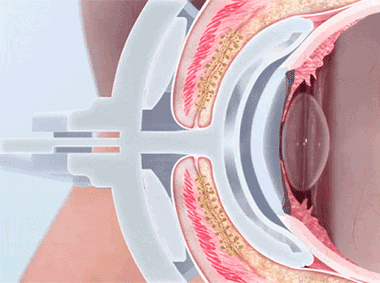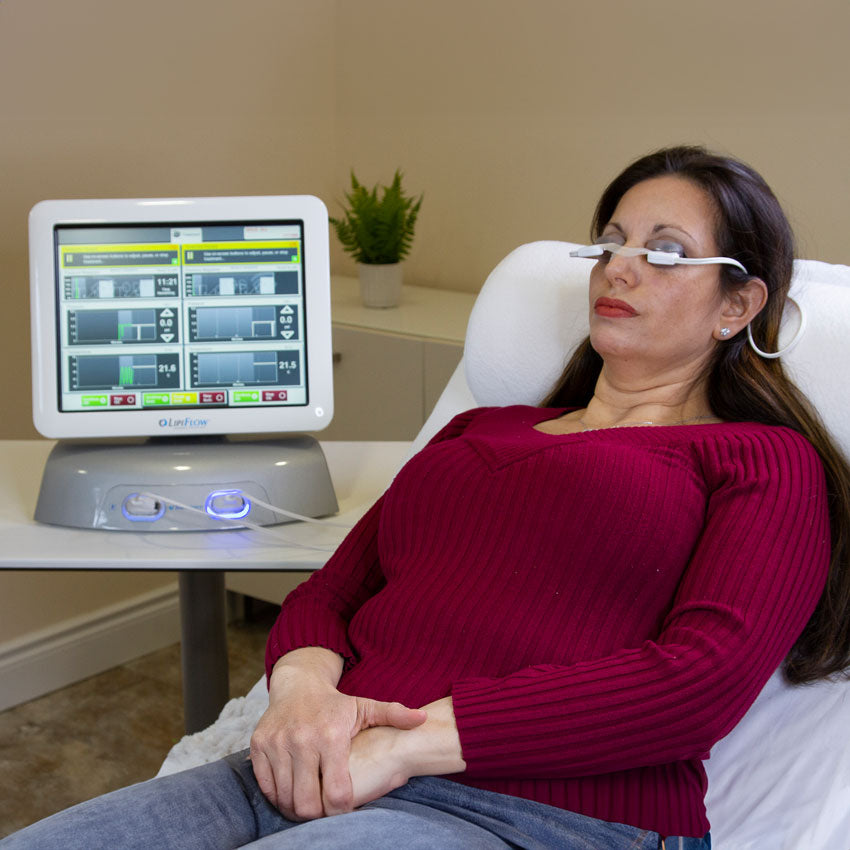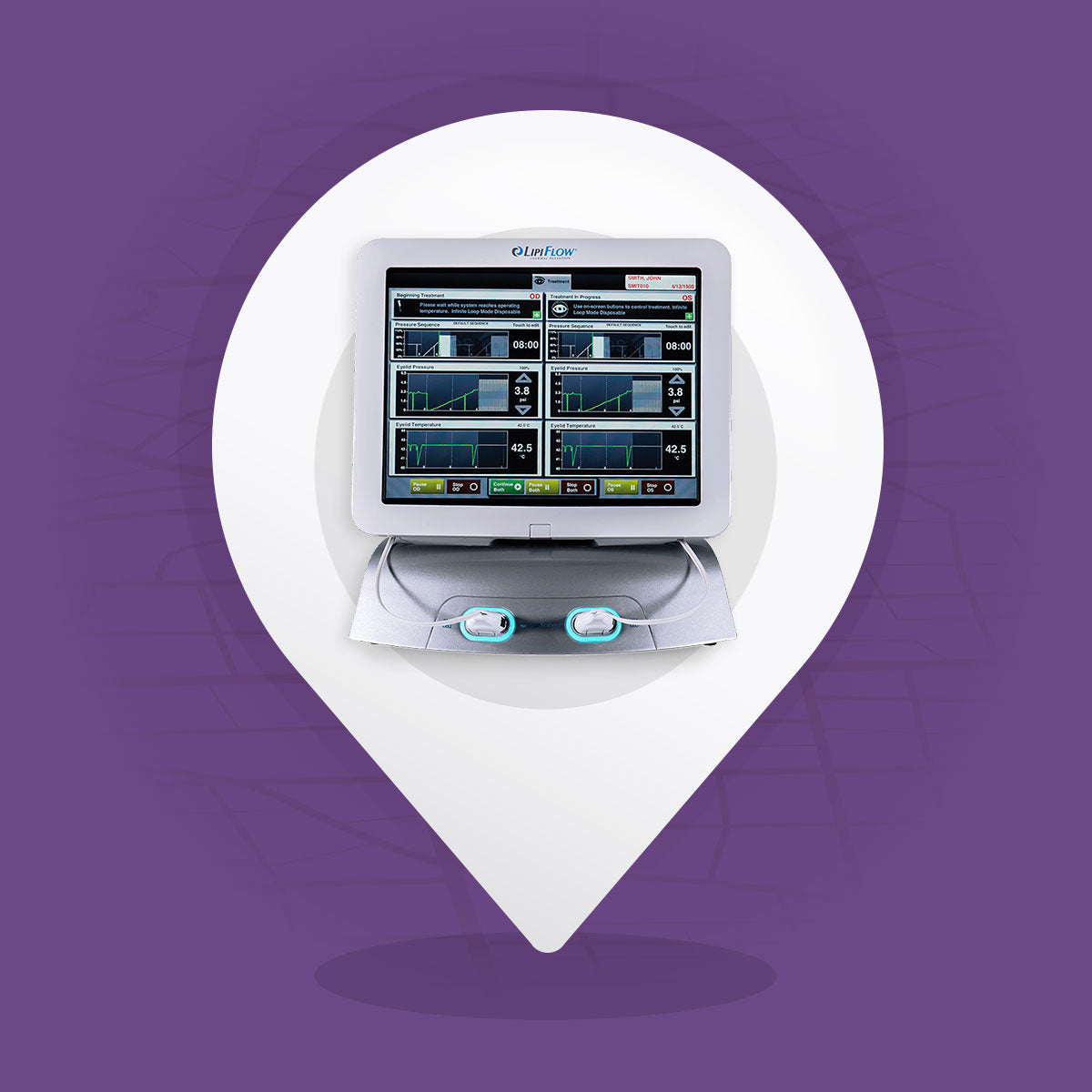What is LipiFlow™?
LipiFlow™ is a groundbreaking technology developed by Johnson & Johnson to treat meibomian gland dysfunction (MGD), the primary cause of evaporative dry eye, the most prevalent form of dry eye disease. This innovative solution specifically targets the Meibomian glands, which produce the oily layer of the tear film. When these glands become blocked or dysfunctional, it can lead to evaporative dry eye.

How does LipiFlow™ work?
LipiFlow™ Treatment utilizes advanced clinical science to address Meibomian Gland Dysfunction (MGD), the leading cause of dry eye syndrome. Backed by over 16 years of scientific research, LipiFlow™ Vector Thermal Pulsation Technology effectively clears gland blockages through gentle heating and massage of both the inner and outer eyelids. The TearScience™ LipiFlow™ system is the only device cleared by the FDA that offers automated therapy for both the inner and outer lids.
The Benefits of LipiFlow™
LipiFlow™ has been shown to be highly effective in treating dry eye syndrome. Clinical studies have demonstrated significant improvement in gland function and patient symptoms after treatment. Unlike traditional treatments like eye drops or warm compresses, LipiFlow™ addresses the underlying cause of evaporative dry eye rather than just alleviating the symptoms.³
Patients who have undergone the LipiFlow™ procedure often report significant relief from their dry eye symptoms, improved comfort, and better quality of life. The treatment is also convenient and can be completed in a single office visit.³

LipiFlow™ activators are single-use sterile devices that safely and comfortably deliver automated therapeutic energies to the Meibomian glands, while protecting the eye. The activators are specifically designed to be placed under and over the eyelids and are contoured above the cornea, so that the activators themselves avoid contact with the core eye surface. The placement of the activators on the eyes and treatment is a simple process that is done with minimal discomfort, on average.⁴
Once the activators are placed on the eyes, treatment begins. The LipiFlow™ activator delivers a combination of heat and gentle pressure to the inner lids, with a simultaneous therapeutic motion on the outer lid. This unique combination of patented heat and gentle adaptive pressure safely removes gland obstruction or old gland content. The entire treatment takes 12 minutes and, as normal gland function recovers, maximum results are usually experienced 6-8 weeks after treatment.¹
The Procedure
The LipiFlow™ procedure is straightforward and typically takes about 12 minutes per eye. Here's a step-by-step overview:

1. Preparation
The eye care professional will assess your condition and explain the procedure.

2. Application
The LipiFlow™ device is placed over the eyes. It delivers controlled heat to the inner eyelids while applying gentle pulsating pressure.

3. Treatment
The heat melts the blockages in the Meibomian glands, and the pressure helps to express the clogged material.

4. Completion
After the procedure, you can return to your normal activities with little to no downtime.

Finding a doctor who offers LipiFlow™ treatment is made easy with DryEye Rescue's Doctor Locator
By simply entering your location, you can access a comprehensive list of qualified doctors, complete with contact information and practice details.
This convenient resource ensures that those suffering from dry eye syndrome can quickly find and connect with specialists who can deliver the advanced care they need to achieve relief and improve their eye health.
CLICK HERE TO FIND A DOCTOR- Reference – TearScience™ LipiFlow™ IFU United States
- Reference - Internal competitive and patent analysis. See iLux website http://www.tearfilm.com/ilux-device/ and TearCare website https://sightsciences.com/us/products/tear-care/
- Blackie CA, Murakami D, Donnenfeld E, Oliff HS, Vectored Thermal Pulsation as a Treatment for Meibomian Gland Dysfunction: A Review Spanning 15 Years. Ophthalmol Ther. 2024; 13:2083-2123
- Reference - Lane SS, et al. A new system, the LipiFlow™, for the treatment of meibomian gland dysfunction. Cornea. 2012; 31(4): 396–404.




